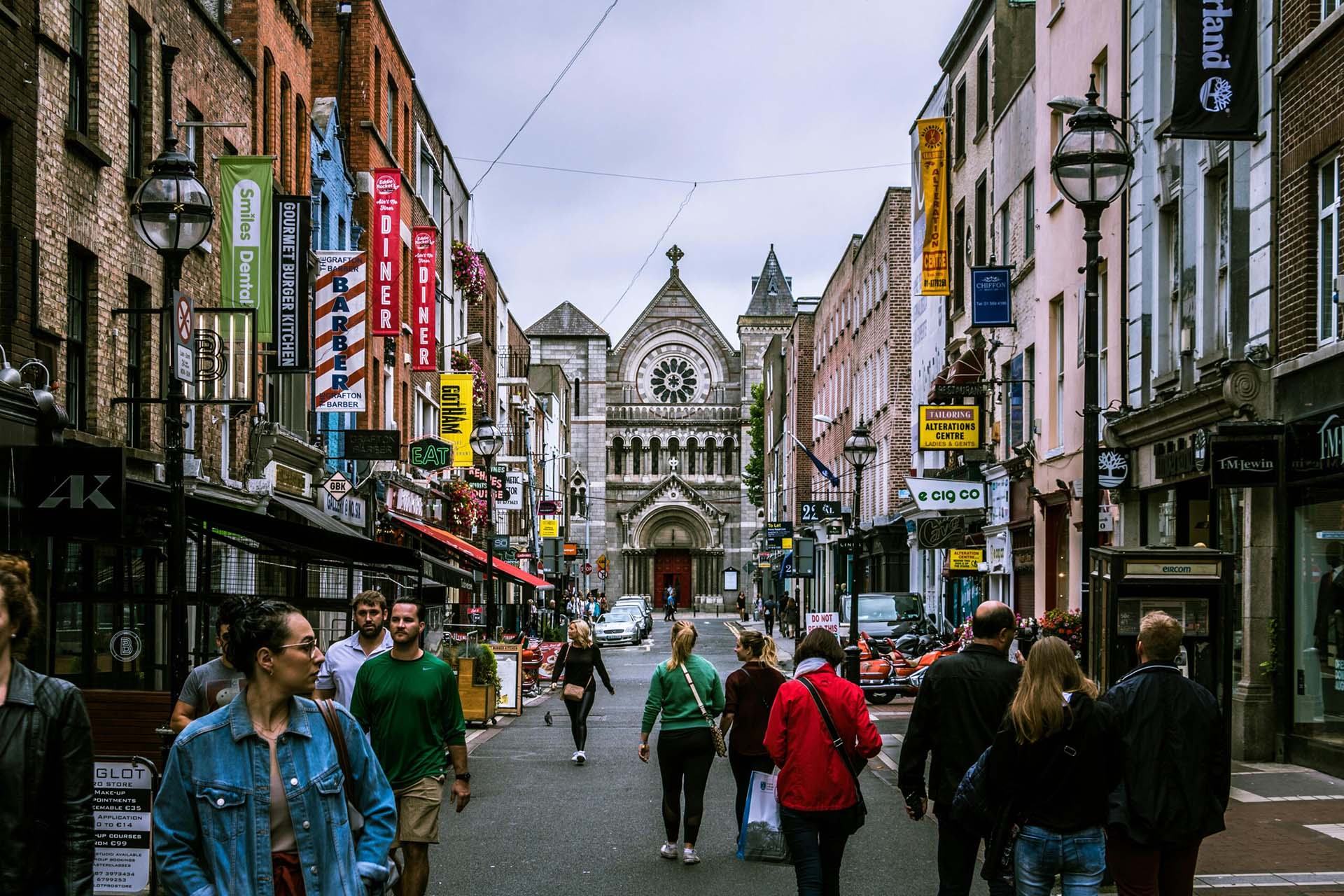
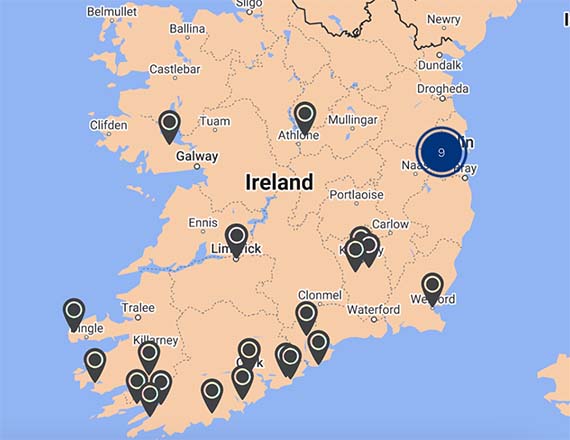
To see all the destinations listed in this guide and other ceramic sites in Ireland, check out CERAMIC WORLD DESTINATIONS (CWD), MoCA/NY's interactive map listing over 4,000 ceramic destinations!
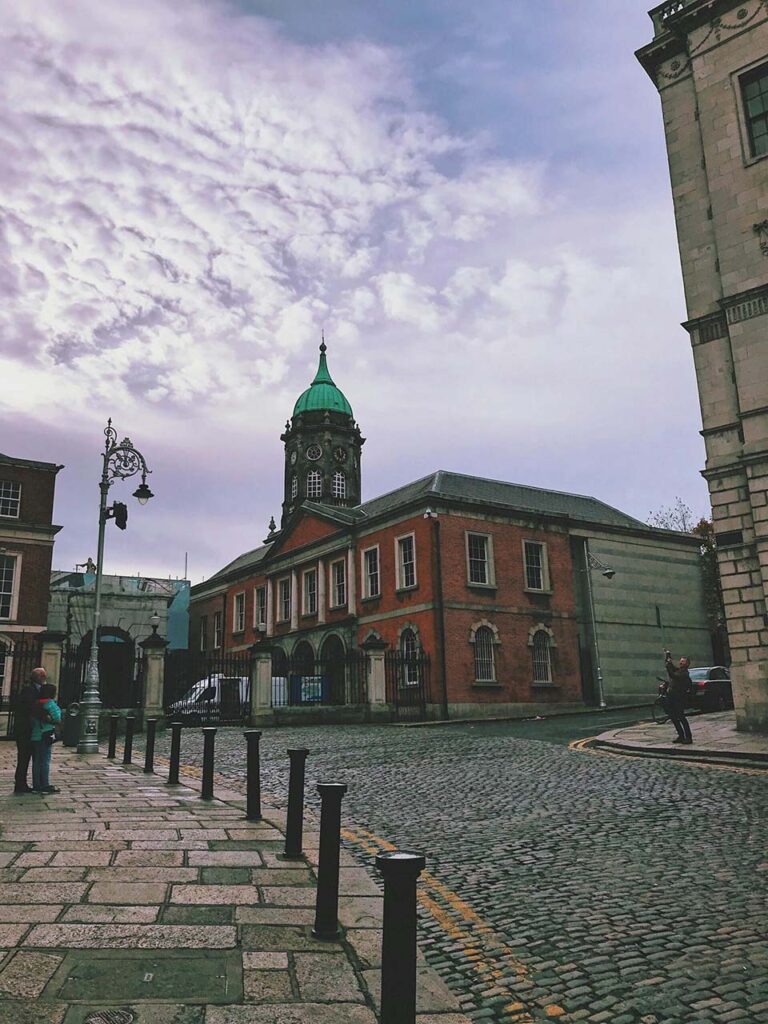
Dublin is renowned for its writers, poets, and musicians, as well as its history of Viking invasions, rebellions, and struggles for independence. One of Dublin’s origins began as a 6th-century monastic settlement named Dubh Linn, which translates to Black Pool in English. Later Viking, Norman, and Anglo-Norman settlements transformed these early communities into the flourishing city we know today. Dublin is also known as Baile Átha Cliath, meaning the town of the hurdled fort in Irish. Note the fada over the Á—a diacritical mark unique to the Irish language that elongates the vowel sound. Over the centuries, the city expanded from the north and south banks of the River Liffey into the vibrant cultural hub it is today.
Perhaps less known is Dublin’s rich visual and material culture. So, let’s put that in the spotlight. What would we do with 72 hours in Dublin through the lens of those passionate about ceramics? Well, let's plan a tour.
Dublin has ample public transport options to help visitors get around with ease. These include taxis—many of which are wheelchair accessible—buses, city bicycles, and a tram system, the Luas, which passes the must-see National Museum of Ireland - Collins Barracks. Visitors can purchase a Leap Card in shops; this card can be topped up and works across the Dublin Busand the Luas tram system, making it a convenient choice for exploring the city.
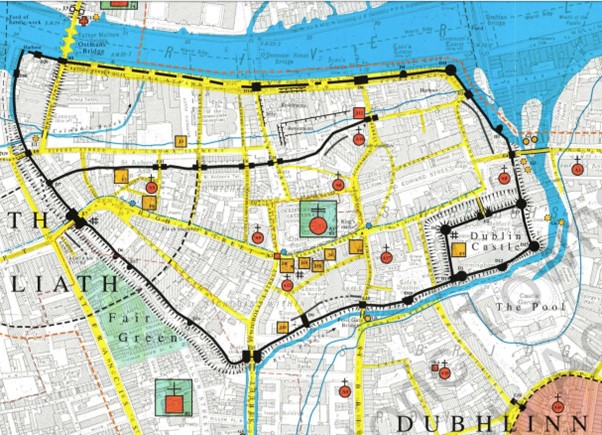
Important to note: All public museums in Dublin are closed on Mondays, with one exception: the Chester Beatty Library, which is closed on Tuesdays.
Dublin’s public museums do not charge an entry fee, allowing free access to their permanent collections. While some temporary exhibitions may have a fee, there’s no charge to come through the front door of any public museum.
For visitors exploring the city, let’s focus on a central radius of two miles (just under four kilometers) where all ceramic-related highlights can be found. Within this area, we’ll look at ceramic tiles, Victorian brickwork, museum and gallery collections, and functional pottery. These are all contained within Dublin's 'City Centre'.
10 AM: The National Museum of Ireland
at Collins Barracks
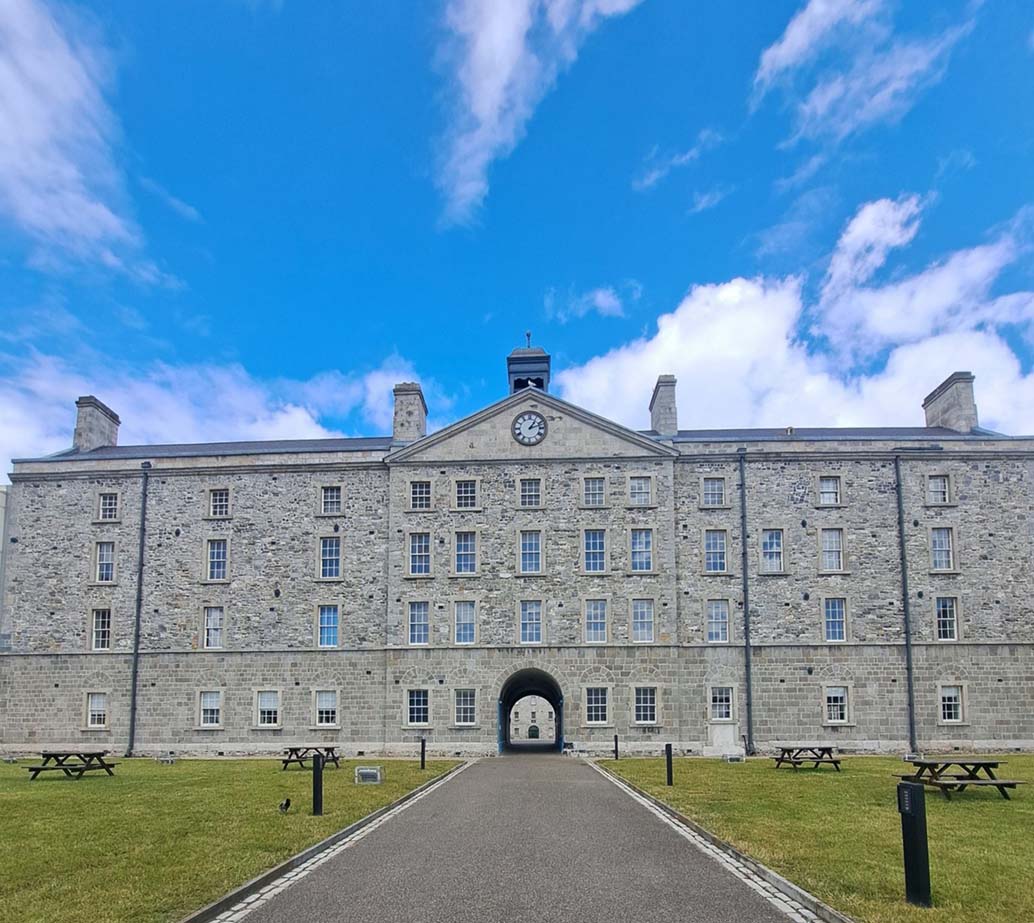
Let us begin with the National Museum of Ireland (NMI) - Decorative Arts & History Collection, located at the historic Collins Barracks site, directly across the river from the Guinness Brewery. Bear in mind that the NMI has three museum sites, and we will be visiting two. The Luas tram will take you directly to Collins Barracks via the aptly named Museum tram stop. Be prepared for tram announcements in both Irish and English.
While one could easily spend the whole day exploring the museum, we will focus on four exhibitions. Starting at 10 AM, these will keep us occupied throughout the morning.
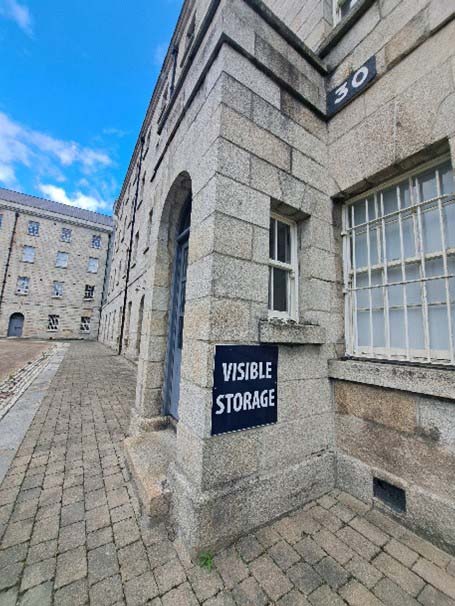
Visible Storage at NMI
Visible Storage is located to the right of the old military square, which one encounters through the archway leading into the museum. Take note of the numbers on the walls at the first-floor level; these were used to count the appropriate marching steps for British soldiers and, after 1922, Irish soldiers.
Visible storage is a treasure trove of all things decorative in Irish material culture from Belleek Porcelain and Della Robbia pottery to works by pioneering 20th-century Irish ceramicists such as Helena and Peter Brennan, John Ffrench, and Gratten Freyer. The collection also features pieces by Dutch potter Sonja Landweer, who is celebrated in Seamus Heaney’s poem A Dutch Potter in Ireland. Landweer played a central role to the development of ceramics as an art form in Ireland. Also featured are very fine examples of pieces by Katherine West and Deidre McLoughlin.
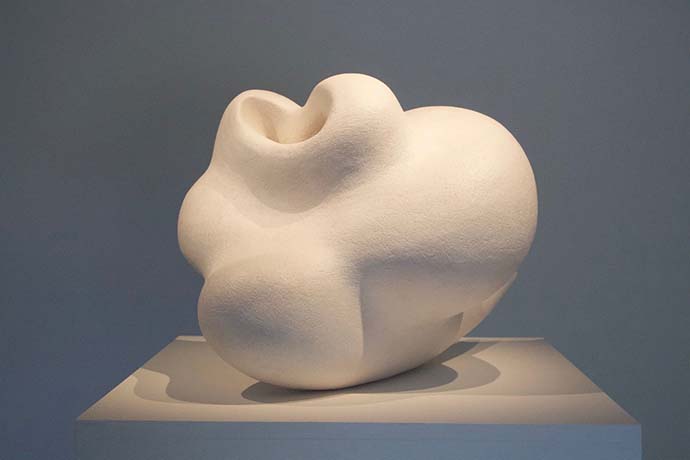
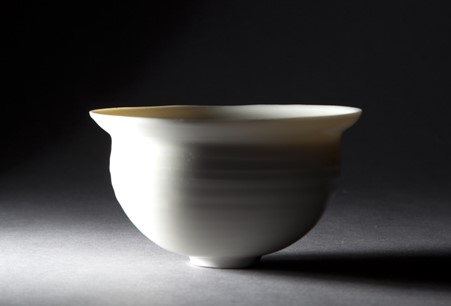
It is important to note that Visible Storage is not a curated exhibition but rather a storage area. This makes exploring it an amazing journey of discovery. Keep an eye out for two exceptional pieces of stained glass: one by the renowned Harry Clarke and another by contemporary glass artist Peadar Lamb.
What's in Store at NMI
What’s in Store is a curated presentation showcasing a wide range of decorative arts in an impressive, user-friendly two-story exhibition space. It features many significant ceramic pieces, including an excellent example of John Ffrench’s tableware from his time as a designer at Arklow Pottery in Co. Wexford (1969), as well as a finely modeled Belleek porcelain series of greyhounds.
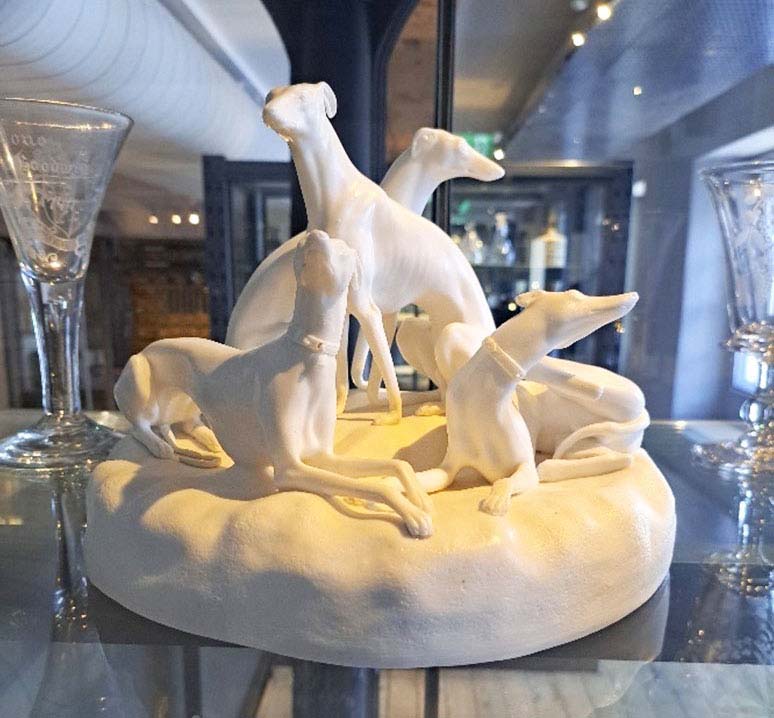
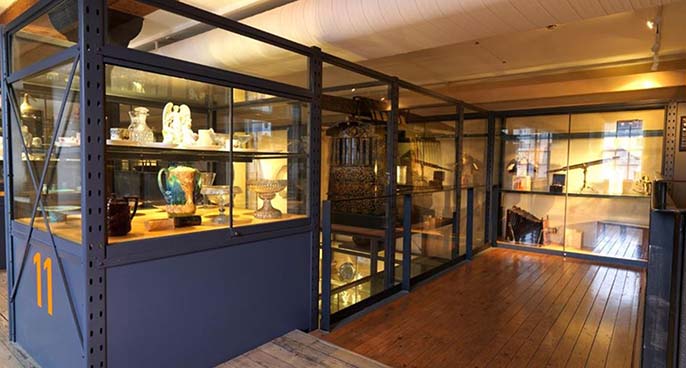
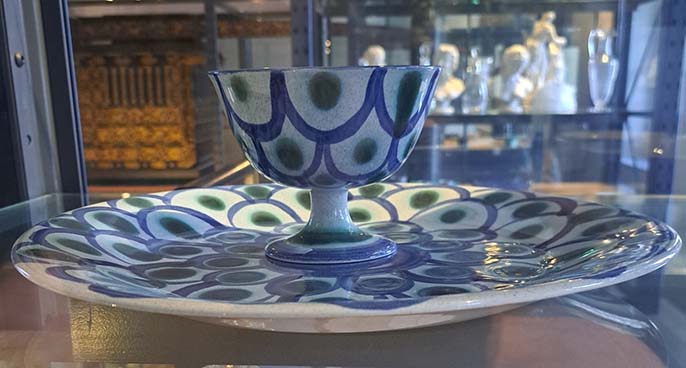
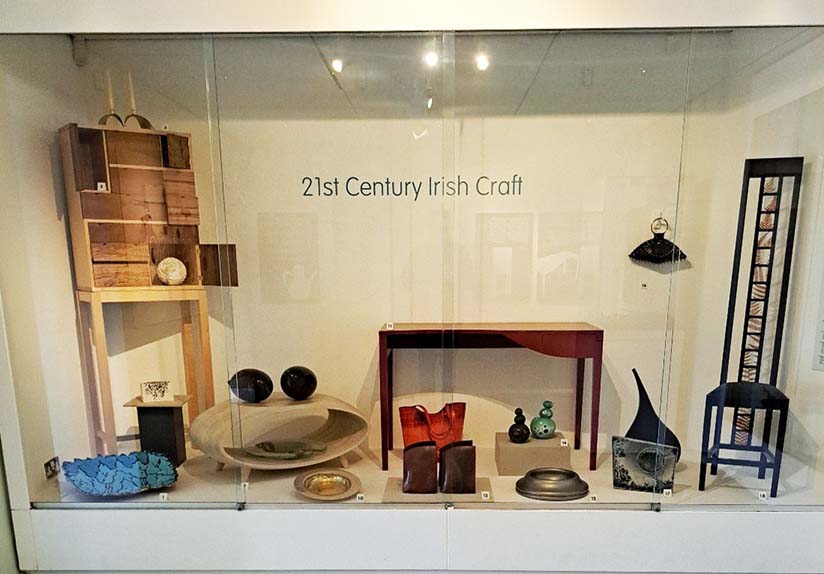
21st Century Irish Craft at NMI
21st Century Irish Craft is housed in a small space opposite Visible Storage, above the museum’s main entrance and foyer. This exhibit features some outstanding examples of contemporary ceramics, including works by Cormac Boydell and Frances Lamb.
Albert Bender
Albert Bender, the Dublin-born son of Rabbi Philip Bender and Augusta Bremer, grew up in a household where his father worked as a schoolteacher. At the age of fifteen, Albert emigrated to San Francisco to work in his uncle’s shipping and insurance company. This marked the beginning of his significant wealth and his tremendous altruistic support for the arts, including significant donations to the San Francisco Museum of Modern Art.
From an early age, Bender began collecting books which soon evolved to art and artifacts from North America and Asia. From the early 1930s, he donated well over 200 Asian artifacts to the National Museum of Ireland and this amazing collection is now permanently on display at the Museums Collins’ Barracks site.
1:30 PM: The Irish Museum of Modern Art (IMMA)
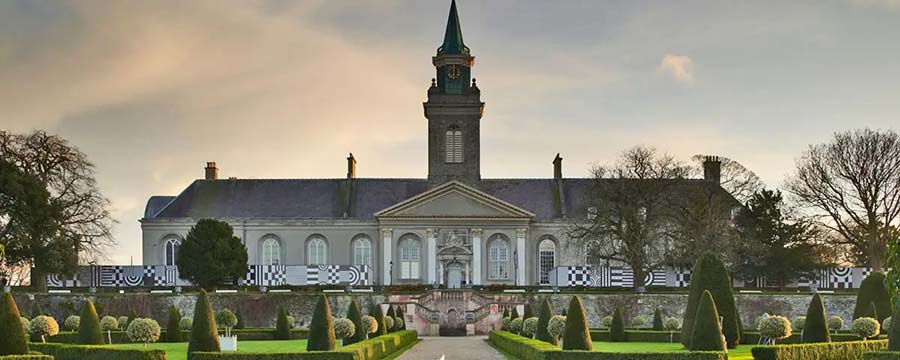
A 1.6 km walk from the National Museum of Ireland brings you to the Irish Museum of Modern Art (IMMA), also known as the Royal Hospital Kilmainham. Originally built as a hospital and retirement home for members of the British Armed Forces, the structure dates back to 1684 and was designed by architect Sir William Chambers. IMMA has served as the national institution for modern and contemporary art since 1991. There are rotating permanent and temporary exhibitions of painting, sculpture, performance, and photography.
It is an impressive building, with expansive and beautifully maintained gardens and grounds. At the west end of the grounds stands a fine example of Dublin architecture: a tower and gateway that originally served as an entrance to Dublin Castle in the city center. However, the transition from horse-drawn to motorised vehicles and the resulting increase in traffic deemed it necessary to relocate the gateway from its original site.
At IMMA, only some temporary exhibitions require a ticket purchase. The grounds are great for walking, and the well-kept walled garden is beautiful year-round.
3 PM: Kilmainham Courthouse and Gaol
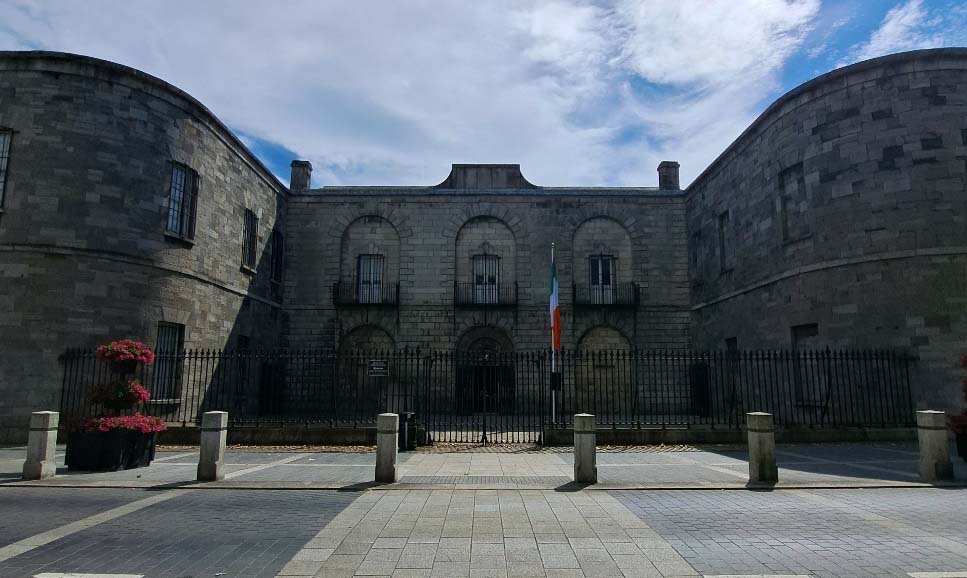
Just outside the west entrance gateway of IMMA is the newly refurbished Kilmainham Courthouse and Gaol,one of the most significant sites of the 1916 Easter Rising, which paved the way for Irish independence in 1922. In 1916, eight of the Rising’s leaders were executed by Crown forces within the Gaol.
Today, Kilmainham Gaol is a hugely popular tourist destination. Visitors can only enter the site as part of a guided tour provided by the Gaol staff. Tickets are available exclusively online, and it is essential to book well in advance, as tours sell out quickly throughout the year.
4:30 PM: Guinness Store House
Returning from the west side of the city centre, one passes the Guinness Storehouse, a world-renowned visitor attraction. Guinness has played a central role in the industrial and social evolution of Dublin, with the Guinness family making significant contributions to the city’s architecture and addressing the social and housing needs of the people of Dublin for centuries.
Take note that the Storehouse closes at 6 PM (and at 5 PM on Sundays), so plan your visit accordingly.
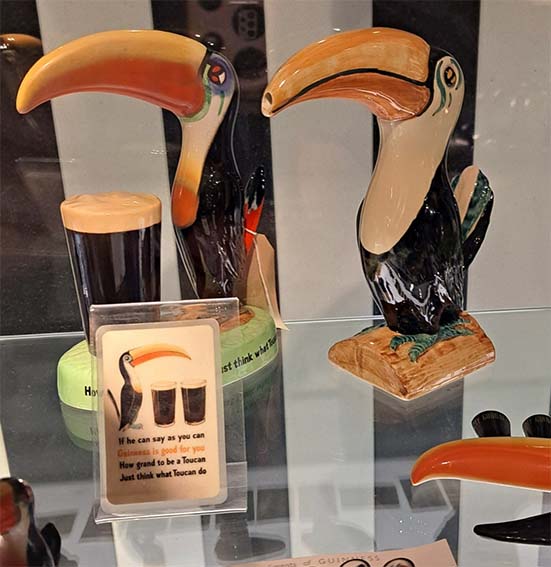
7 PM: Theatre

Dublin has a thriving theatre scene, with six long-established venues offering a mix of comedy, drama, and opportunities to delve into the works of 20th-century Irish playwrights. Many of these theatres also host live music events, adding to their vibrant programming. Notable venues include the Olympia, Gaiety, and Abbey Theatres, as well as the Project Arts Centre and the Ambassador, Civic, Gate, and Smock Alley Theatres.
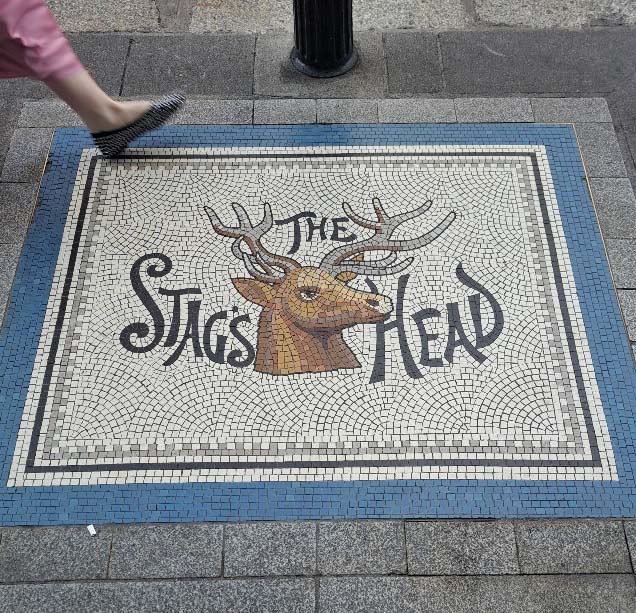
8 PM: Pubs!
Whether pre- or post-performance, Dublin offers a wealth of pubs to explore, many showcasing fine examples of ceramic mosaics and stained glass. On the North Side, visitors might consider Slattery’s on Capel Street or The Oval on Abbey Street. On the South Side, popular options include The Stag’s Head on Dame Lane, Keogh’s on South Anne Street, or Neary’s on Chatham Street.
All of these South Side pubs are within walking distance of Grafton Street, which, along with College Green, feels like the real centre of the city.
10 AM: The Fruit Market
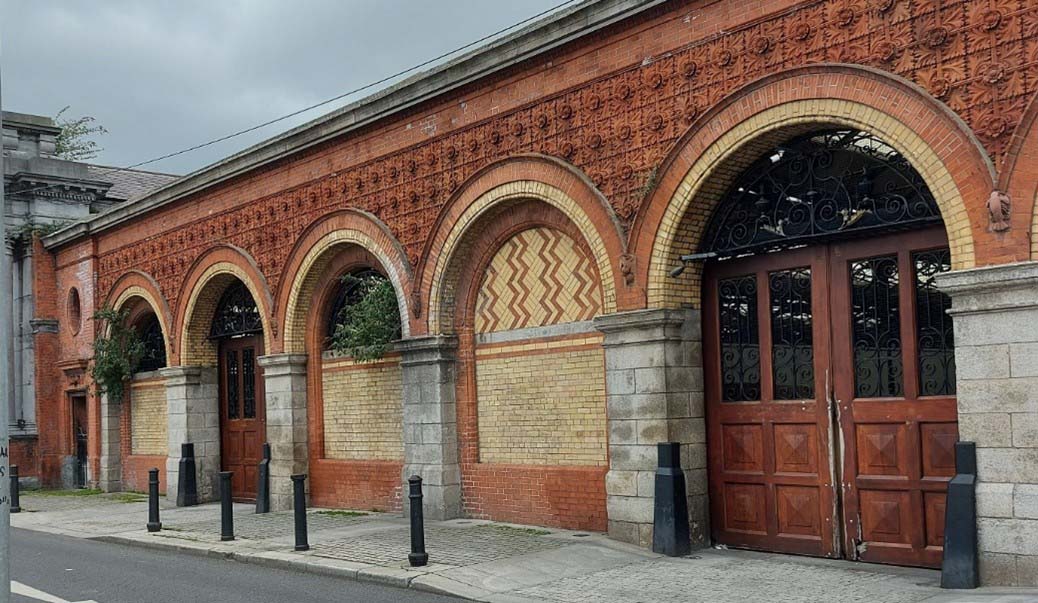
Just off Capel Street and visible from the Luas (tram) line when returning from IMMA, NMI, or the Royal Hospital Kilmainham, is the Dublin Fruit and Vegetable Market, located at 7 Mary’s Lane. This large, single-story red-brick building was designed by city architect Parke Nevelle in 1884, with its wrought iron and glass roof crafted by J. Laysaght of Bristol. Plans to demolish the market faced fierce local opposition, and it is now listed for restoration by Dublin City Council in 2024.
Locally known as the Fruit Market, this site has been a hub for buying and selling fruit and vegetables since 1892. Traders seeking to buy and sell arrive at the market long before the usual trading hours of 9 AM - 5 PM. As a result, the thirst they’ve worked up after an early day of labour has long influenced the local pubs to open much earlier than usual. This led to these pubs being known as early houses.
From a ceramic perspective, the Fruit Market has several key features. Rectangular in layout, the market has four defined entrances (amongst others), each marked by carved granite archways, pillars, and figures. A whole series of archways are filled with patterned red and tiled brick, often creating advancing and receding optical illusions. Between these archways are carved Portland stone sculptures depicting a variety of vegetables and fish. Above them, intricate and interlacing terracotta tilework features floral and vegetable motifs, combining swirling and geometric patterns in a highly decorative style. Still a functioning market today, it retains an urban vibrancy, adding colour and energy to this part of Dublin.
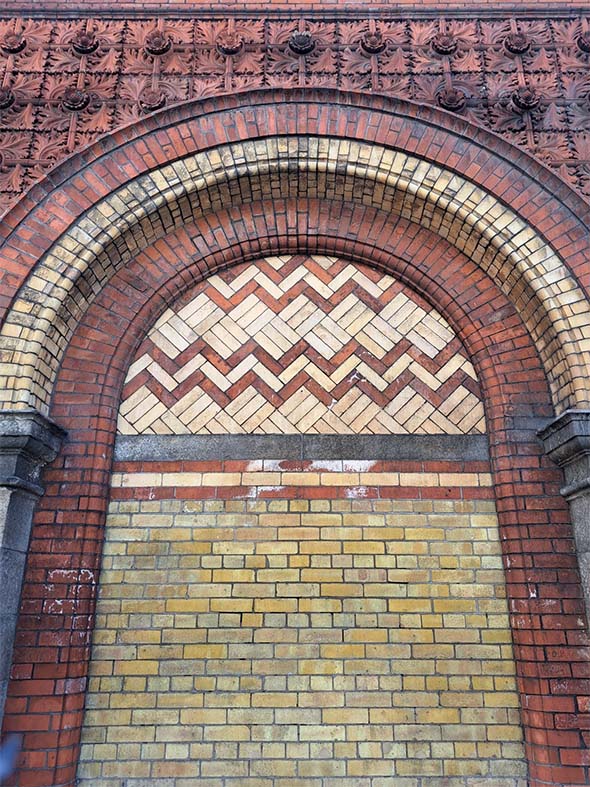
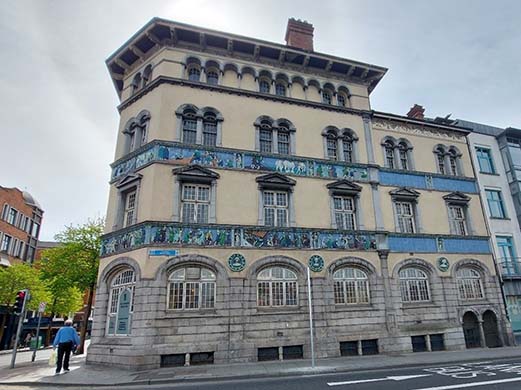
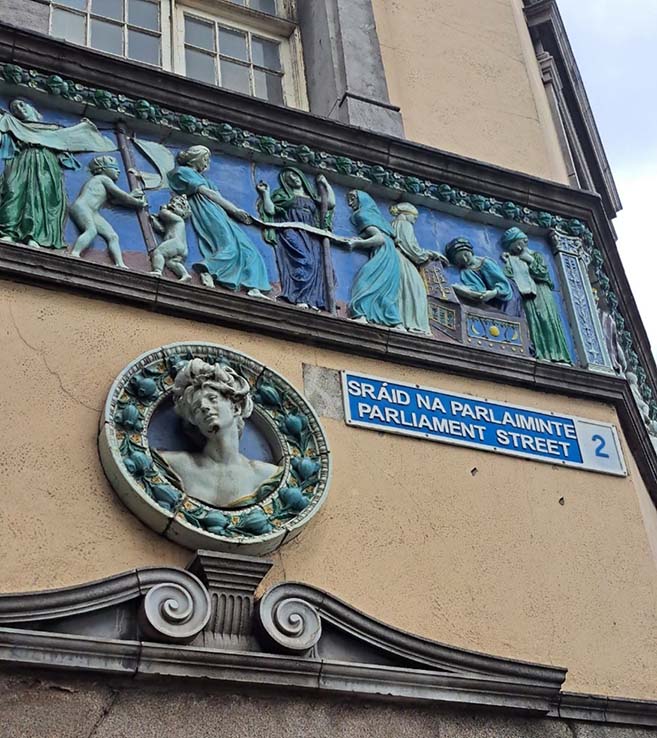
12 PM: The Sunlight Chambers
Travelling south down Capel Street and crossing the River Liffey, one encounters possibly the most unique and comprehensive example of ceramics in Dublin’s public domain. Sitting on the corner of Parliament Street and Wellington Quay is the Sunlight Chambers, a four-story corner building completed in 1910 by architect Edward Ould.
The building was originally home to the Lever Brothers in Dublin, who amongst many other products, manufactured soap. Often considered an eyesore by Dubliners (before its restoration), it now stands out for its fine majolica tile friezes, which tell the ‘story of soap’.
The highly colourful tiles, designed by English potter and sculptor Conrad Dressler, are resplendent in yellows, blues, and greens, with a distinctly Italian feel in their frieze-like presentation. The main entrance has particularly fine ceramic frieze work and bold lettering.
Overlooked for many years and still unknown to many locals, it is a true gem of ceramic art in the city.
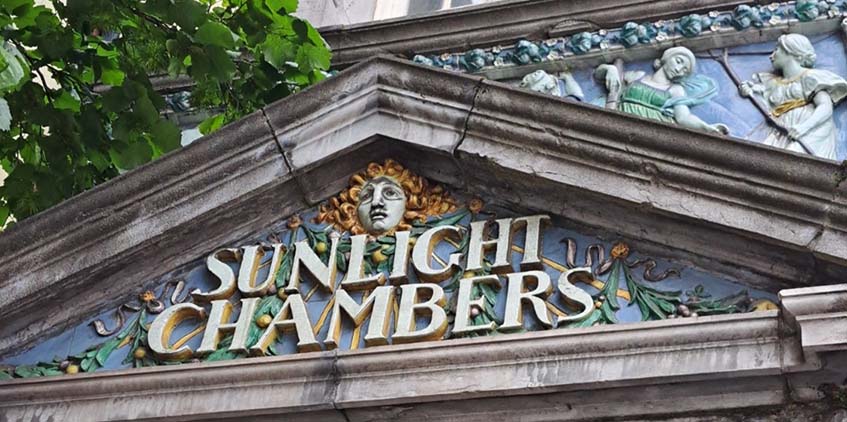
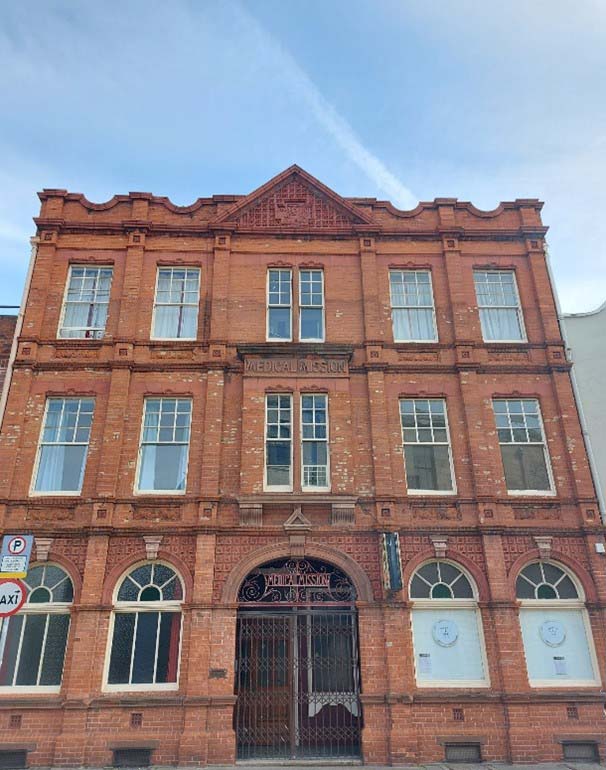

1 PM: The Medical Mission - Chancery Street
Returning to the city centre from IMMA, Kilmainham Gaol, or NMI Collins Barracks, take a moment to pause along the River Liffey outside the Four Courts and seek out the Medical Mission on Chancery Street. Designed by George Palmer Beater in 1891 to train missionaries for work in South America, Asia, and Africa, the Mission moved to its current location in 1893.
The Chancery Street façade, made of terracotta brick, has some very fine carved clay lettering and tilework above the main entrance. At the apex of the façade, you’ll find swirling lettering and decoration reminiscent of the Arts and Crafts movement’s aesthetic.
A degree more sensational is the story behind the damaged and repaired brickwork, primarily focused on the central windows of the first floor. During the 1916 Easter Rising, British forces occupied the building due to its proximity to the Four Courts, which had been taken over by the 1st Battalion of the Dublin Brigade of the Irish Volunteers. Shots were exchanged during the week-long Easter Rising, resulting in damage to the brickwork of the Medical Mission—damage that remains visible to this day.
To conclude day two in Dublin, continue along Parliament Street to encounter the Parliament Building, an elegant structure with an impressive classical interior and vaults, which are open to the public. From here, you have two options: continue up Castle Street to visit Christ Church Cathedral, or walk into Dublin Castle. The nearest entrance to the castle still has the cuts and scars in its granite archways, left by Crown forces sharpening their bayonets before patrolling the streets of Dublin.
The Dublin Castle now serves as a venue for state and government events, celebrations, conferences, and festivals. It is also frequently featured in period films and television series.
3 PM: Dublin Castle and The Chester Beatty Library
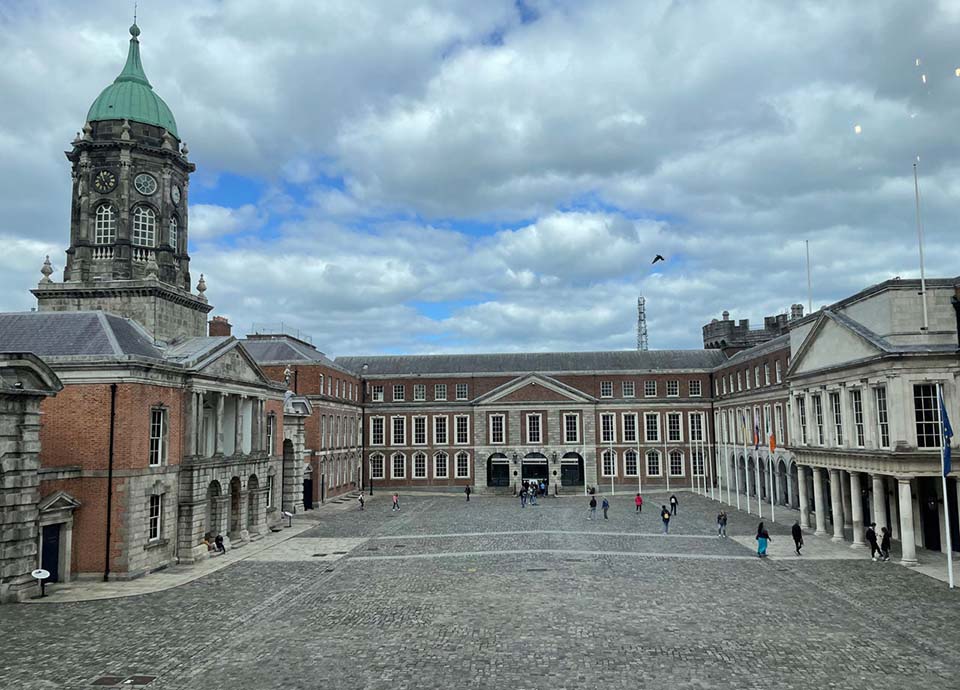
Within Dublin Castle lies another rare gem: the Chester Beatty Library. Sir Alfred Chester Beatty (1875–1968) was a New York-born mining entrepreneur and an avid collector of African, European, Middle Eastern, and Asian antiquities. He made Ireland his home in 1950.
With paternal grandparents of Irish descent, Chester Beatty is held in extremely high regard for his generosity and contribution to the material culture and heritage of the Irish State. Indeed, he was the first civilian in Ireland to be accorded a state funeral by the Irish government.
His collection was originally housed in a museum he purpose-built on Shrewsbury Road on the south side of Dublin. In 2000, the collection was relocated to its current home in Dublin Castle, marking the beginning of a remarkable museum dedicated to exhibiting an extremely rare and unique collection of artifacts, prints, books, Qur’ans, and other objects amassed through a lifelong passion for collecting.
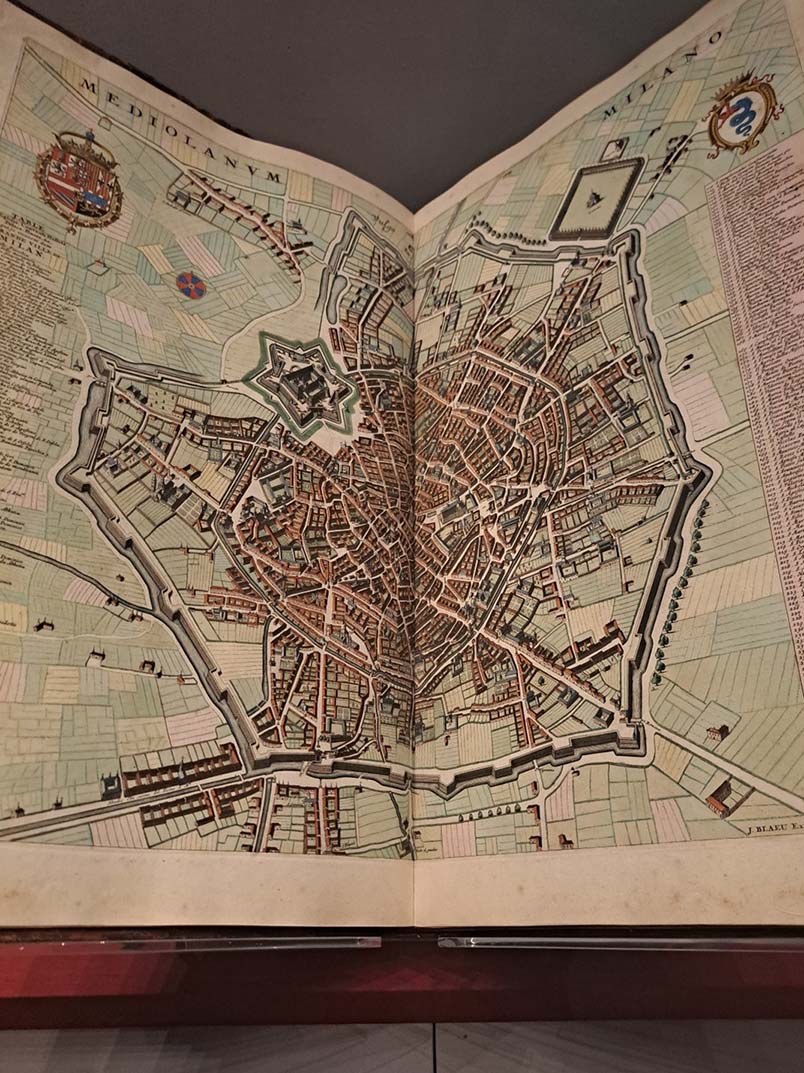
Now centrally located just off Dame Street, the Chester Beatty Library is an ideal way to conclude a walking day in Dublin. The library was named European Museum of the Year in 2002.
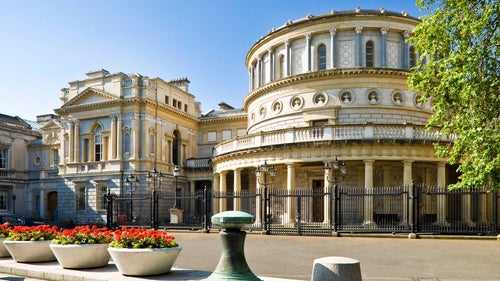
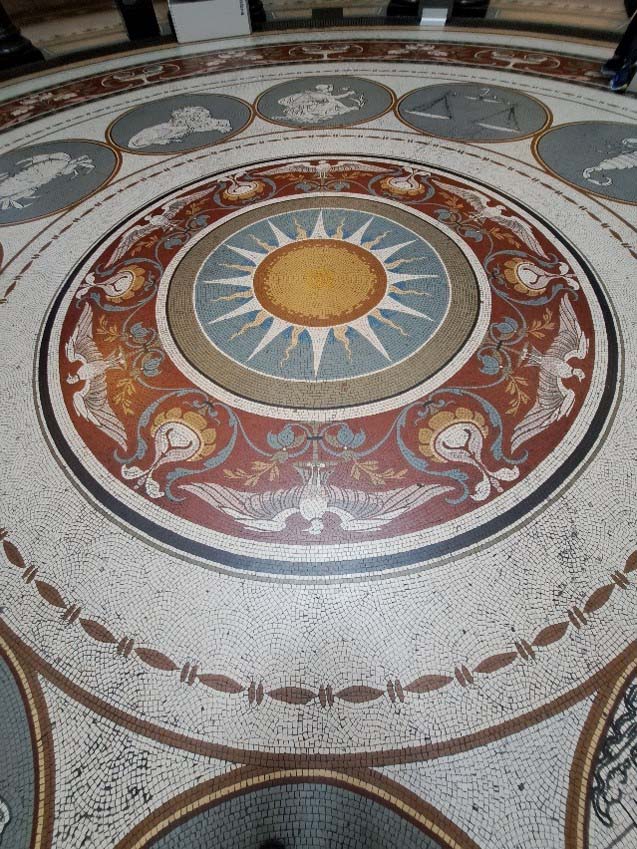
10 AM: The National Museum of Ireland, Kildare Street
Visitors should note that there are two National Museum sites in Dublin, as well as a National Library and a Natural History Museum. In 2024, the Natural History Museum, locally known by schoolchildren as The Dead Zoo, is undergoing major restoration and refurbishment, with plans to reopen this year.
The National Museum of Ireland, Collins Barracks, is featured on the first day of visits to ceramic sites in Dublin, mainly due to its location and proximity to other sites of interest on the west side of the city. Here, on the third day, however, the focus shifts to the south city centre, where sites of interest are located in close proximity to one another.
The Kildare Street National Museum (of Archaeology), which opened to the public in 1890, is located to the right-hand side of Dáil Éireann, the seat of the Irish Government. To the left of Dáil Éireann is the National Library of Ireland, where access beyond the main foyer is limited to library members. However, it is well worth entering the library to admire its stunning mosaic floor.
Returning to the National Museum of Archaeology, there are three ceramic elements of particular significance. Firstly, the impressive mosaic floor is located in the circular rotunda at the museum’s main entrance. Created in the 19th century by Ludwig Oppenheimer, a Manchester-based artist, the mosaic features intricate designs, including the twelve signs of the Zodiac.
Next, throughout the museum and surrounding the doorways into the exhibition rooms, are quite expressive ceramic panels and decorative details. The glazed majolica tiles, produced by the Leeds Fireclay Company, were based on drawings by Thomas Manly Deane. The yellow, blue, and white glazed finishes draw inspiration from the Renaissance plaques created by the Della Robbia family in Florence, Italy.
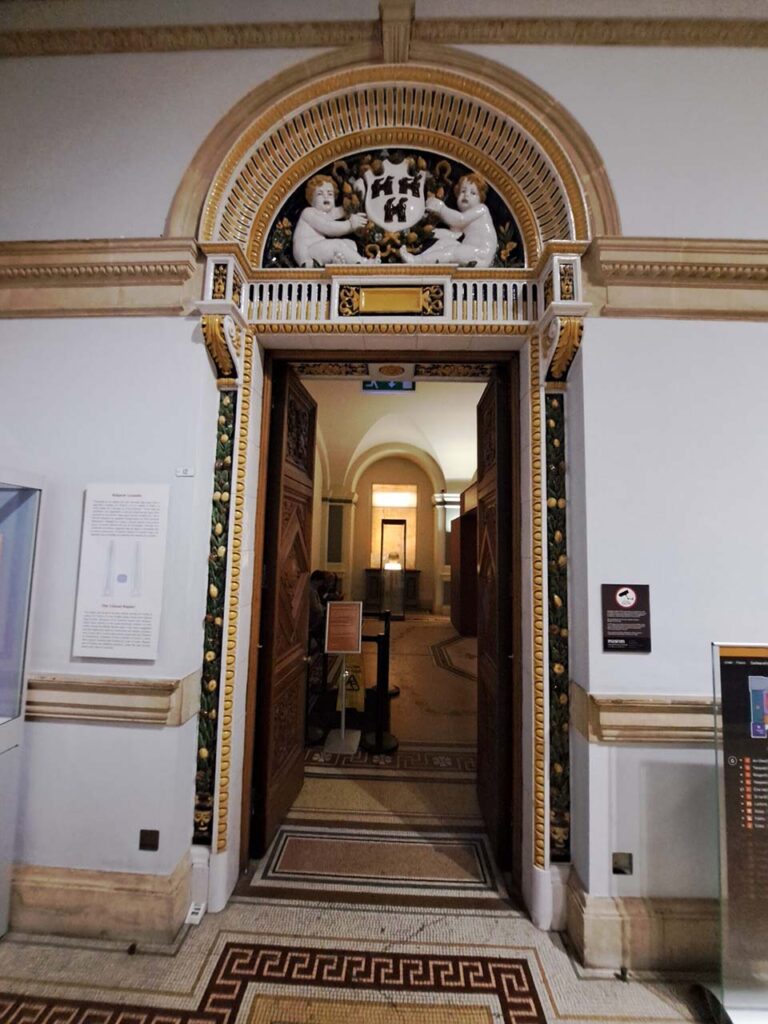
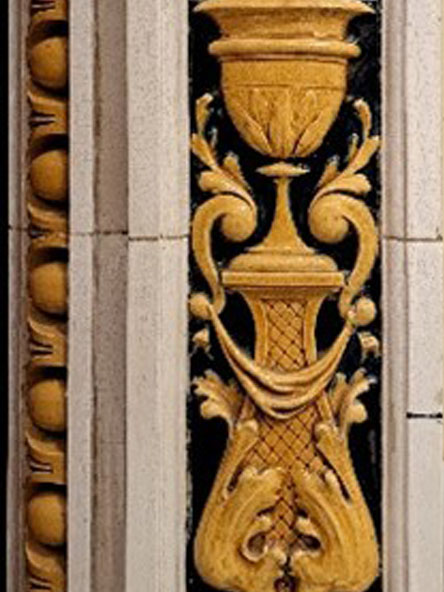
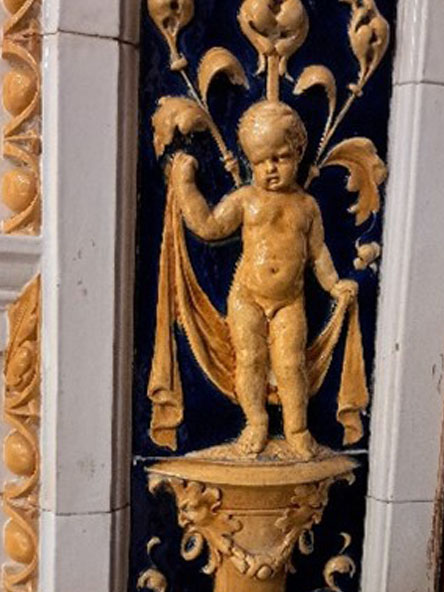

Lastly, but by no means least, is the impressive collection of Beaker Vessels from the Bronze Age (2500 BC). These earthenware pieces are notable for their rugged construction and distinctive incised banding and chevron-patterned exteriors. They have been discovered at numerous locations across Ireland, including Counties Clare, Limerick, and Louth, as well as in Northern Ireland, particularly in County Derry/Londonderry.
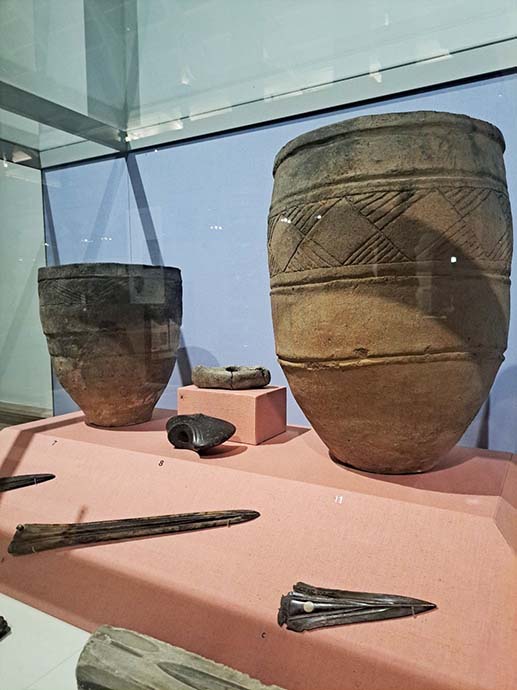
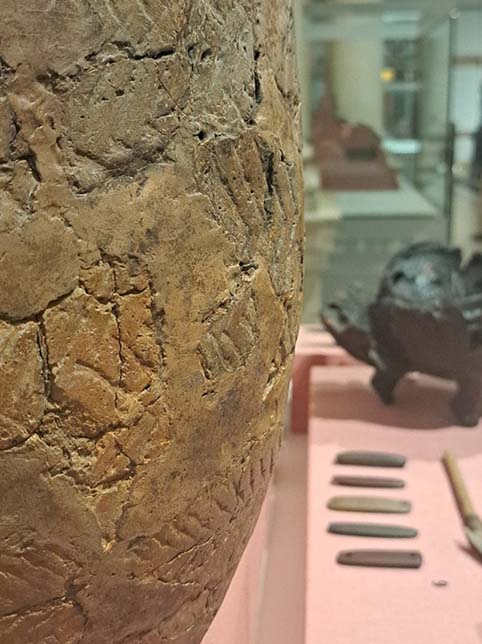
1 PM: The Irish Design Shop
The Irish Design Shopoffers more than just Irish ceramics, exhibiting a wide range of contemporary Irish craft and design. Located at 1 Drury Street, it is only a short walk from the Kildare Street Museum locations. Established in 2008 by jewellers Clare Grehan and Laura Caffrey, the shop features an extensive selection of products in wood, ceramics, glass, textiles, and print, spread across two retail floors. It is an ideal venue to explore contemporary craft and design in a retail context.
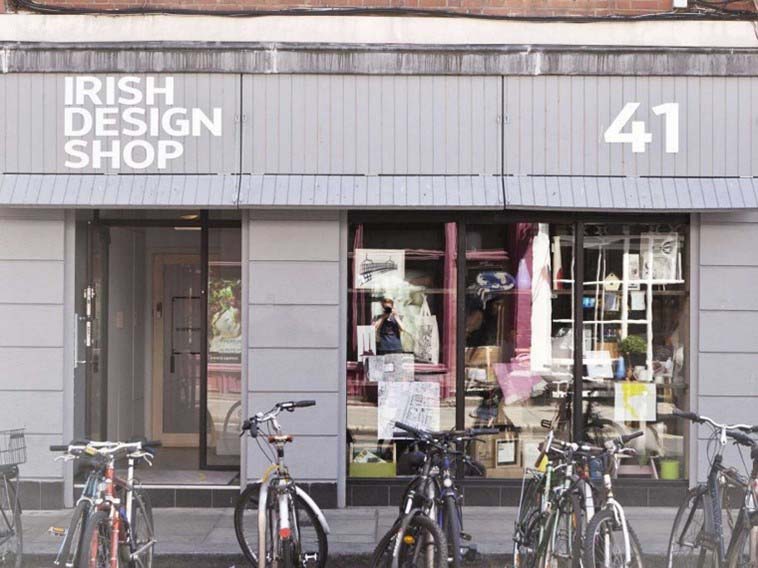
2 PM: The National Gallery of Ireland
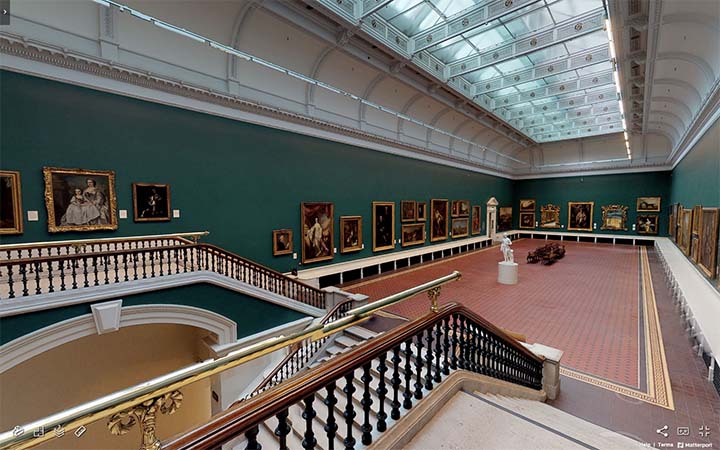
In this part of Dublin, between Grafton Street, Kildare Street, and Trinity College, visitors have an abundance of options to explore. The National Gallery of Ireland, located on Merrion Square, houses an impressive collection of classical and contemporary paintings, including the recently discovered Caravaggio masterpiece, The Taking of Christ.
3 PM: Douglas Hyde Gallery of Contemporary Art
The Trinity College campus is home to the Douglas Hyde Gallery of Contemporary Art, which hosts rotating exhibitions year-round. The campus also houses the world-famous Book of Kells, a must-see attraction with huge demand. Be sure to book your tickets online well in advance, often months ahead, to secure your visit.
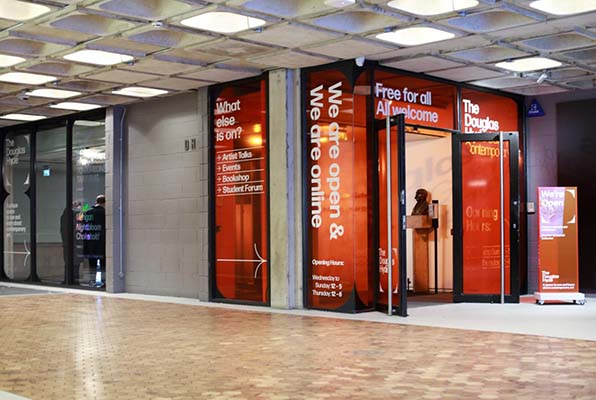
4 PM: Georgian Architecture Tour
Dublin is known for its fine Georgian architecture, and there are guided walking tours available to explore this rich heritage. Alternatively, you can choose to wander at your own pace around Merrion Square and Fitzwilliam Square, both excellent examples of Dublin’s Georgian charm.
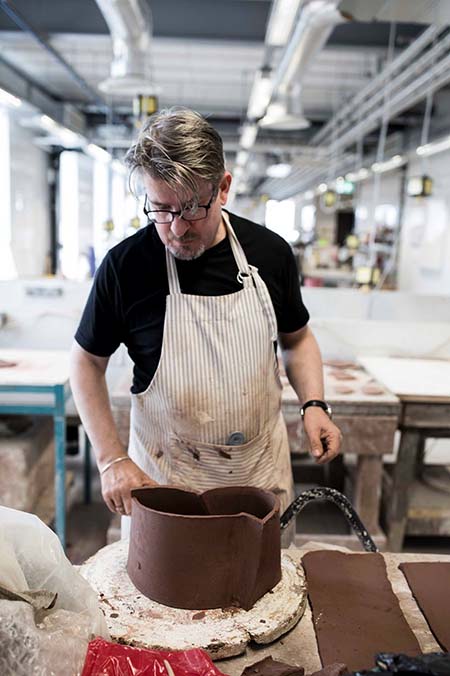
Michael Moore is Reader Fine and Applied Arts, Ceramics and a member of the International Academy of Ceramics and a Higher Education Authority Fellow. He holds a Master of Arts Degree from The National College of Art and Design, Dublin and is a registered maker with the UK and Irish Craft Councils. Michael also holds a Pg. Cert in Training from the Education Faculty of the National University of Ireland.
He has works in permanent collections in the National Museum of Ireland, the Ulster Museum, Keramion, Germany, The Mark Rothko Foundation, Latvia, The Icheon World Ceramics Foundation, Korea, the New Taipei Ceramics Museum, Taiwan, and the Australian National University. website
Want to see our next ceramic guide to a city? Tokyo, Japan - Part II and Cairo, Egypt are coming next! You too can feature ceramic destinations in your city. To share a guide, event, exhibition news, or research, visit our CONNECT PAGEfor more information!
